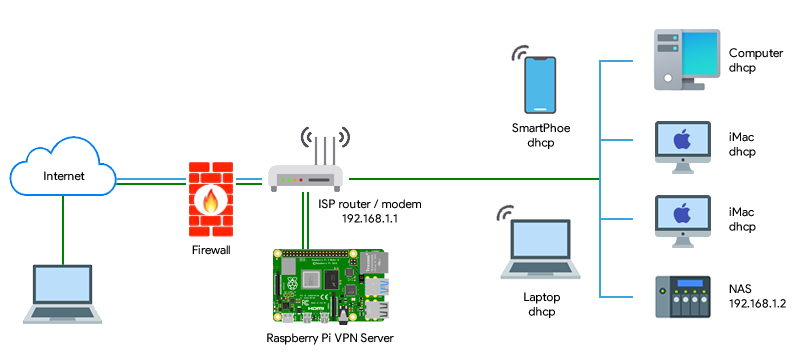Secure Remote IoT VPC Network With Raspberry Pi For Free: A Comprehensive Guide
Introduction
Are you ready to dive into the world of IoT deployment using a Raspberry Pi and RemoteIoT VPC for free? This guide is here to help you master the art of setting up a secure and efficient remote IoT network without breaking the bank. Whether you're a hobbyist tinkering with smart home devices or a professional aiming to deploy scalable IoT solutions, this article will walk you through everything you need to know about setting up, optimizing, and leveraging RemoteIoT VPC SSH for your Raspberry Pi projects.
What is RemoteIoT VPC?
RemoteIoT VPC networks can be configured with device groups, making it easy to manage multiple IoT devices in a centralized manner. When a device is added to the group, it is automatically added to the VPC network, and its IP address is assigned. This eliminates the hassle of manually configuring each device, saving you time and effort. The VPC network ensures that all connected devices are securely isolated from the public internet, providing an additional layer of protection for your IoT projects.
Why Use Raspberry Pi for IoT?
The Raspberry Pi is a popular choice for IoT enthusiasts due to its affordability, versatility, and ease of use. By leveraging the power of Raspberry Pi, you can build a fully functional virtual private cloud (VPC) network without spending a fortune. With RemoteIoT VPC, you can securely and directly connect Raspberry Pi and IoT devices from anywhere in the world. This setup allows you to send commands and batch jobs to your Raspberry Pi from a web portal, without needing to discover the IoT device's IP address or change any firewall settings.
Benefits of Using VPC SSH
Using VPC SSH offers several advantages, including:
- Enhanced security: VPC SSH ensures that your IoT devices are isolated from the public internet, reducing the risk of unauthorized access.
- Easy management: With device groups in RemoteIoT VPC, you can manage multiple IoT devices effortlessly.
- Cost-effective: By utilizing free AWS resources, you can set up a robust VPC environment without incurring additional costs.
- Scalability: As your IoT projects grow, you can easily scale your VPC network to accommodate more devices.
Setting Up RemoteIoT VPC Network with Raspberry Pi
Setting up a RemoteIoT VPC network with a Raspberry Pi, particularly when leveraging free resources, unveils a universe of opportunities for everyone from tech enthusiasts to professionals. Follow these easy steps for a secure setup:
Step 1: Prepare Your Raspberry Pi
Start by installing the latest version of Raspberry Pi OS on your device. Once installed, connect your Raspberry Pi to your local network and ensure it is powered on. You can use an Ethernet cable or Wi-Fi for connectivity.
Step 2: Create a VPC in AWS
Sign up for an AWS account if you don't already have one. Navigate to the VPC dashboard and create a new VPC. Configure the VPC settings according to your requirements, ensuring that it supports SSH connections. You can use the free tier of AWS to avoid incurring costs.
Step 3: Configure SSH Access
Set up SSH access for your Raspberry Pi by generating an SSH key pair in AWS. Download the private key and store it securely. Use this key to establish an SSH connection to your Raspberry Pi from your local machine or a web portal.
Step 4: Add Devices to the VPC
Orchestrate your IoT devices to connect to the RemoteIoT VPC. This process involves adding devices to a device group, which automatically adds them to the VPC network and assigns them an IP address. This ensures that all devices are securely connected and can communicate within the private network.
Step 5: Test Your Setup
Once everything is configured, test your setup by sending commands and batch jobs to your Raspberry Pi from the web portal. Verify that you can securely access your IoT devices without needing to discover their IP addresses or modify firewall settings.
Conclusion
In conclusion, RemoteIoT VPC Raspberry Pi free provides an excellent opportunity to build a secure and efficient remote IoT network at a minimal cost. Secure remote control of IoT devices on your Raspberry Pi is made possible via a VPC, which lets you establish a private and secure network connection over the internet without sacrificing data privacy or control.
This comprehensive guide has walked you through the process of setting up your own RemoteIoT VPC network with Raspberry Pi. You've learned about the benefits of using VPC SSH, how to prepare your Raspberry Pi, create a VPC in AWS, configure SSH access, and add devices to the network. By following these steps, you can securely and remotely access your Raspberry Pi for exciting IoT projects, ensuring both security and simplicity.
With RemoteIoT VPC, you can confidently embark on your IoT journey, knowing that your devices are protected and easily manageable. Happy tinkering!

How To Securely and Directly Connect Raspberry Pi with RemoteIoT P2P

Gain remote access to your Raspberry Pi by using RemoteIoT to SSH into

How to use your Raspberry Pi as a VPN server: Part 1 - Fastoe